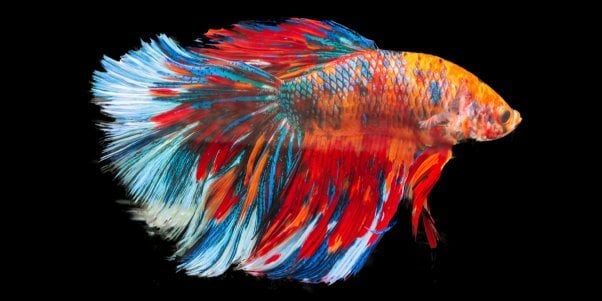Betta Fish Tank Setup: A Step-by-Step Overview for Beginners
Betta Fish Tank Setup: A Step-by-Step Overview for Beginners
Blog Article
Exactly How to Breed Betta Fish Successfully: Professional Strategies and Insights for Hobbyists Looking to Broaden Their Betta Collection
Breeding Betta fish requires a nuanced understanding of genes and environmental problems, making it important for hobbyists to approach the process with both persistance and treatment. Producing an optimal reproduction environment, choosing the right sets, and observing the intricacies of their courtship actions are foundational actions that can significantly influence the outcome. Additionally, the subsequent care of the fry is essential for ensuring their healthy and balanced development. As we discover these key parts, it becomes clear that successful reproduction is not nearly the preliminary pairing yet includes a more comprehensive strategy that advantages mindful consideration.
Comprehending Betta Fish Genes
Recognizing the genes of Betta fish is critical for effective breeding, as it influences traits such as shade, fin form, and habits. Betta fish display a diverse selection of shades and patterns, mainly figured out by their genetic makeup.
In enhancement to pigmentation, fin morphology is one more significant aspect of Betta genes (betta fish). The sizes and shape of fins are influenced by numerous genes, including those that establish whether the fins are brief, long, or veil-shaped. Comprehending these genetic variants assists dog breeders predict the phenotypic outcomes of their spawn
Additionally, behavior characteristics such as aggressiveness and territoriality can also be affected by genetics. These behaviors play an essential duty in the breeding process, as they can influence spawning success and the total character of the resulting fry. By thoroughly understanding these hereditary principles, breeders can make enlightened decisions, ultimately enhancing their reproduction programs and attaining preferable results.
Preparing the Reproduction Environment
Developing an optimal breeding atmosphere is essential for the successful reproduction of Betta fish. The very first action in preparing this environment is to select a proper reproduction container, ideally ranging from 5 to 10 gallons.
Next, think about the usage of a sponge filter or an air rock to provide gentle water flow without developing solid currents that can emphasize the fish. It is vital to set up plants or reproducing cones to supply concealing places and promote comfort for the female during the spawning process. Floating plants, such as Java moss or water sprite, can also produce a much more native environment while facilitating bubble nest building by the male.
Before introducing the breeding sets, ensure the water is conditioned and devoid of damaging chemicals, such as chlorine or hefty steels. betta fish. Normal water adjustments should be carried out to preserve ideal water high quality, improving the possibilities of effective reproduction. With these prep work in area, the reproducing setting will certainly sustain the wellness and health of both Betta fish
Choosing Breeding Pairs
Choosing the right reproduction sets is important for accomplishing successful Betta fish reproduction. Healthy and balanced Betta fish display vibrant shades, clear eyes, and active habits.
Personality is one more crucial factor to consider, as Betta fish are known for their hostile nature. It is a good idea to select a male and lady that display suitable characters to decrease tension throughout the breeding procedure. A tranquil male can urge a smoother courtship, while a female that is also aggressive may interfere with the process.
Hereditary history also plays a substantial role in the high quality of the spawn. Breeding fish that are genetically diverse can lower the risk of hereditary wellness issues and improve the total vigor of find out here now the fry. It is valuable to research the family tree of both the man and female, focusing on preferable attributes such as fin type, color scheme, and dimension.
The Reproduction Process
The breeding procedure of Betta fish calls for careful planning and interest to information to ensure a successful result. It is crucial to prepare an ideal reproduction container, ideally a 5-10 gallon aquarium with a temperature kept at 78-80 ° F. The container should be equipped with a heating unit, filter (ideally sponge kind to stay clear of strong currents), and lots of water plants for the woman to conceal.
When the atmosphere is established, present the picked reproducing set to the container, allowing them to accustom. Observe their behavior; the male will show sophisticated courtship routines, consisting of flaring his fins and developing a bubble nest. If the woman shows rate of interest, she will display vertical red stripes showing readiness for spawning.
When the lady is receptive, the pair will certainly engage in a breeding accept, during which the male feeds the eggs. Preserving optimal water problems during this period is crucial for the growth of healthy and balanced Betta fry.
Caring for Betta Fry

Feeding Betta fry is vital, as they call for a diet regimen high in healthy protein. They can be fed infusoria or liquid fry food, transitioning to finely crushed premium pellets as they expand. Feed tiny sections numerous times a day to encourage healthy growth without overloading the tank with uneaten food.

As they mature, check their growth very closely and separate any kind of you could look here aggressive people to stop damage. By giving a nurturing setting and appropriate nourishment, hobbyists can efficiently raise Betta fry right into vibrant, healthy and balanced fish, ultimately improving their breeding ventures.
Verdict
Successful Betta fish reproduction requires thorough interest to hereditary selection, ecological conditions, and take care of the fry. By recognizing the genetics of Betta fish and preparing a proper breeding atmosphere, enthusiasts can enhance the possibilities of producing dynamic, healthy and balanced children. Selecting suitable breeding sets and closely keeping an eye on the courtship and spawning processes are important. Ultimately, offering optimal care for the fry ensures their healthy and balanced growth, adding to a growing Betta collection.
Report this page